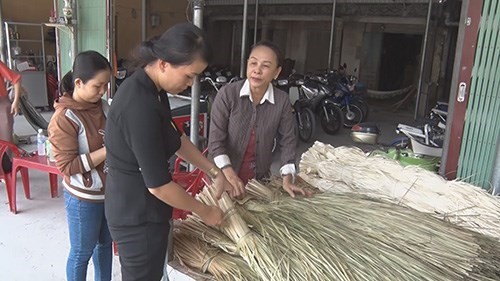
Tien Giang seeks ways to boost its handicraft products for export
Latest
 |
| Tien Giang province earns 5 million USD from exporting handicrafts. (Photo: VNA) |
Every year, the handicraft cooperatives in Tien Giang province earn about 5 million USD from exporting handicrafts.
The US is still the largest consumption market for Vietnamese handicraft products with sales accounting for 35% of annual export turnover. Japan, the European Union, Australia and the Republic of Korea are also among the country’s key exporting markets.
According to Deputy Chairman of the provincial Union of Cooperatives Le Minh Khanh, the province has established 14 handicraft cooperatives with nearly 2,000 members and created jobs for nearly 5,300 workers.
The network of handicraft cooperatives mainly operates in the fields of handicrafts, handicraft production, water hyacinth wicker, sedge mats and handicrafts for export.
The artisans earn 3.5-5 million VND (150-215 USD) a month on average.
The villages have played an important role in creating jobs and incomes for rural people and improving their lives, helping reduce poverty and enabling the creation of new-style rural areas.
The Long Dinh Mat Knitting village in Chau Thanh district, for instance, has been operating for nearly 70 years and produces patterned sleeping mats with high quality and beautiful designs.
Its mats are well known in the Mekong Delta.
The province plans to have 70% of the villages functioning efficiently by 2025, around 80% of their workers being trained or retrained to improve their skills and knowledge of basic information technology, and ensuring hygiene and labour safety at their workplace.
It also aims to have at least 50% of the villages making products recognised under the country’s One Commune-One Product programme.
It wants the average income of workers to increase by at least 150% from 2020 and all production establishments to comply with environmental protection regulations.
However, they still have many limitations such as small scale and lack of mechanisation.
Many establishments lack the resources needed to obtain advanced production techniques or to expand. They also face a shortage of artisans, many of whom prefer to work in industries to earn higher incomes, experts say.
























